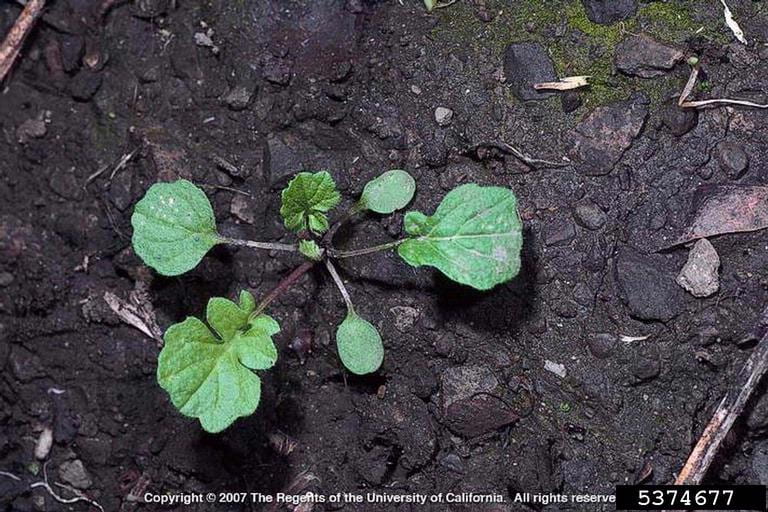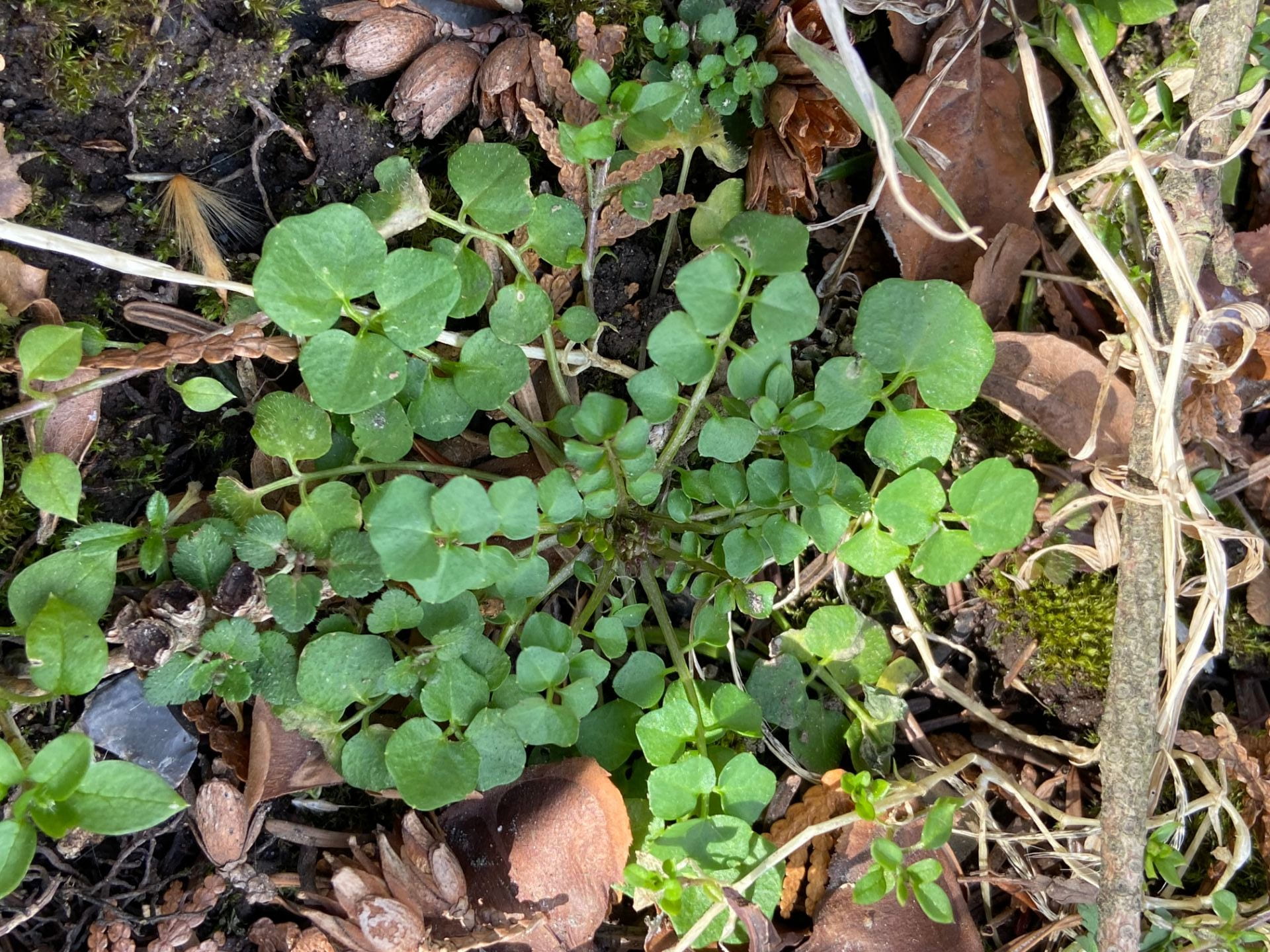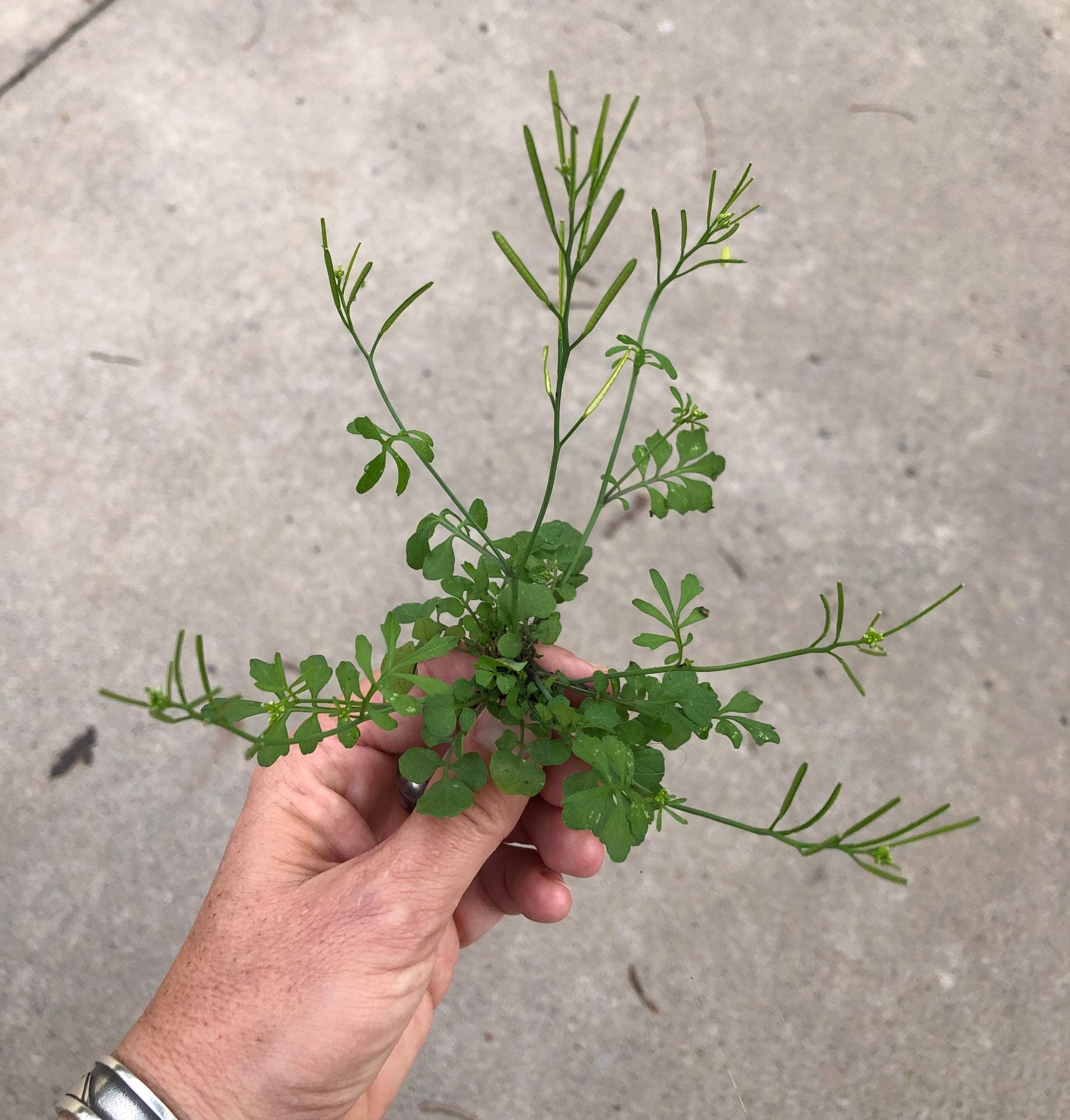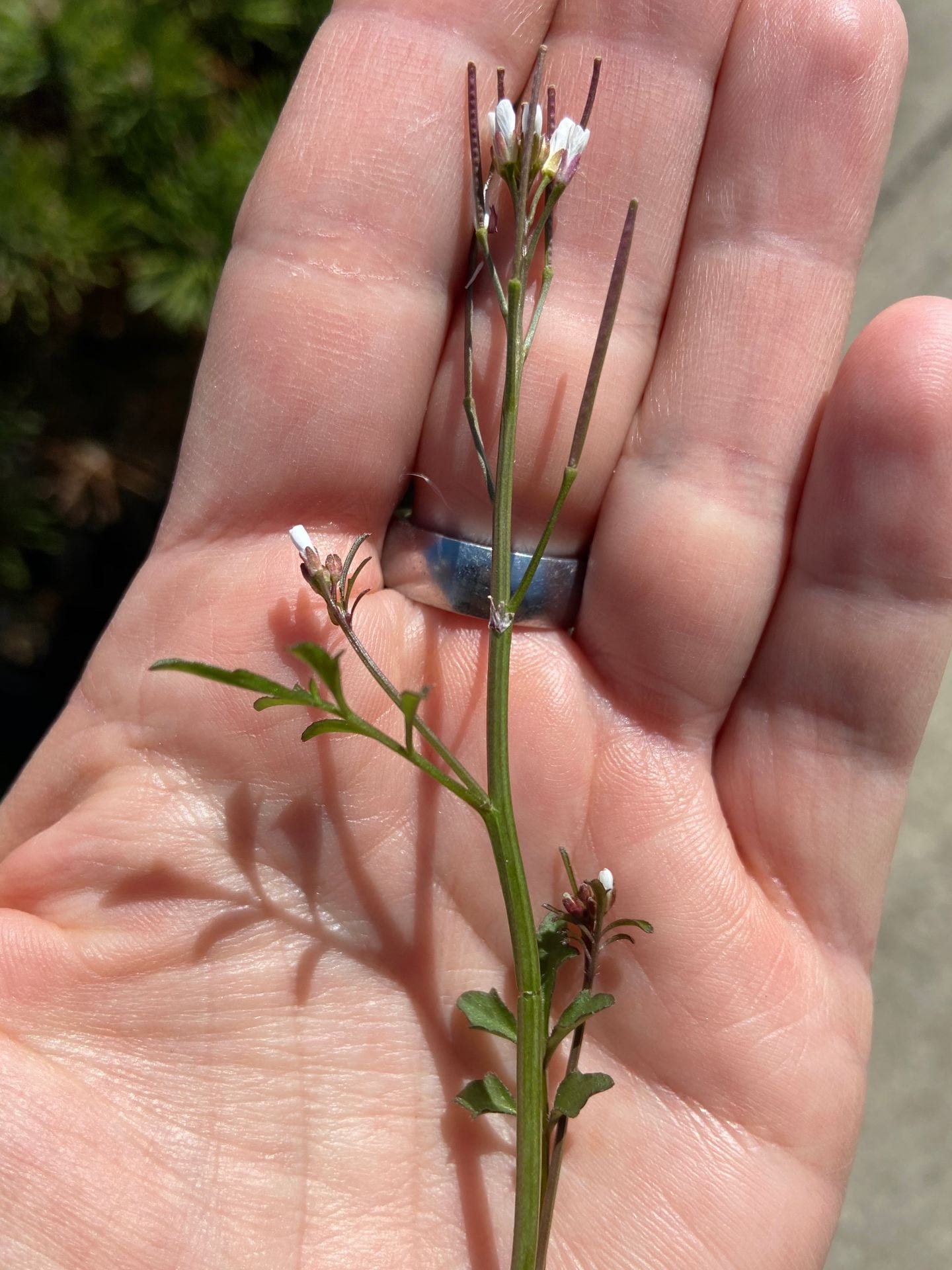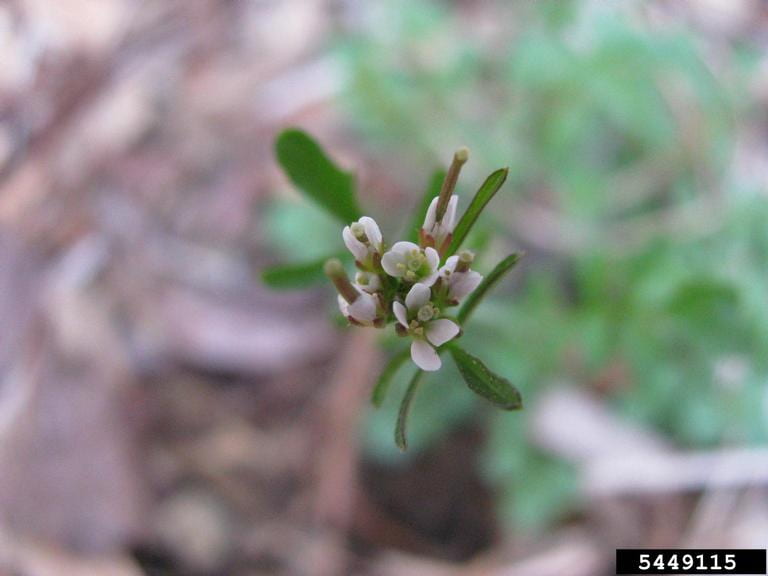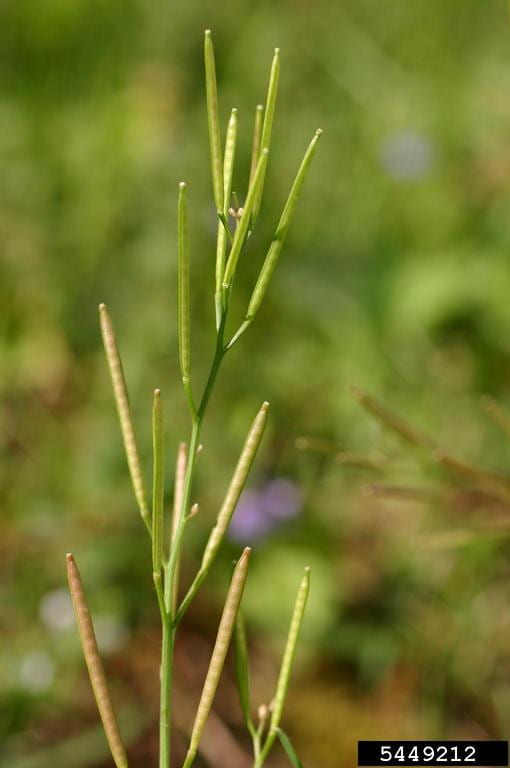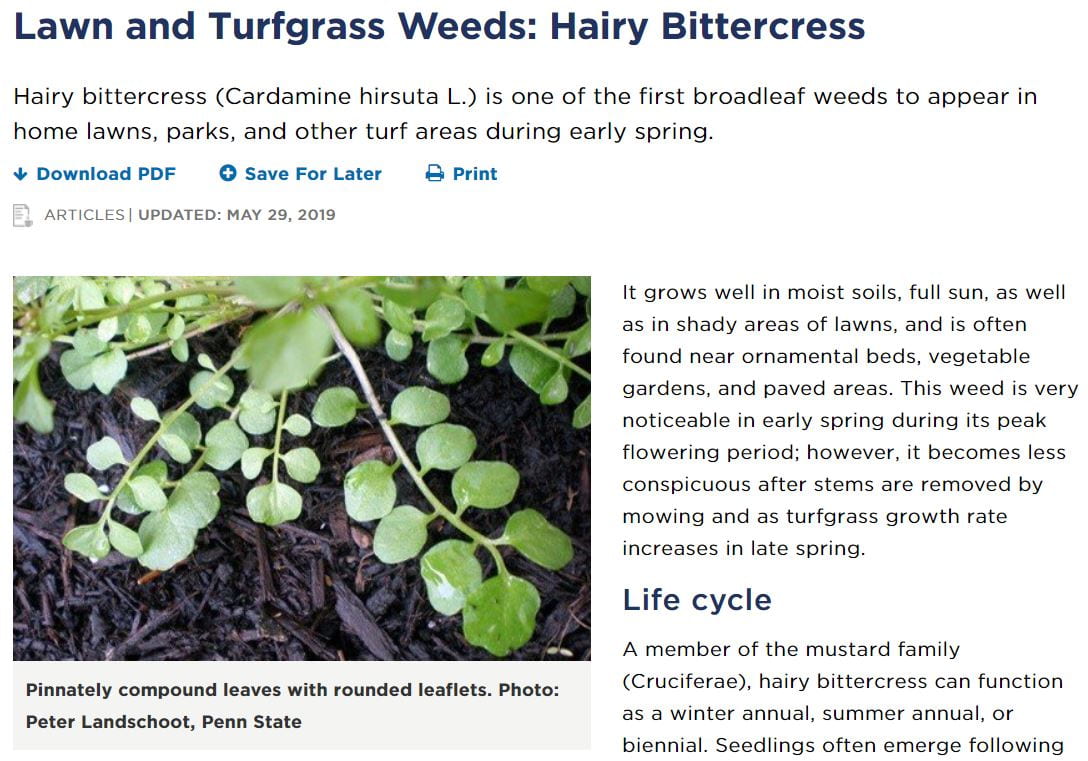Hairy Bittercress (Cardamine hirsuta) is a weedy mustard common in nurseries, container plants, turf, irrigated crops and moist disturbed areas. In New York it is usually a winter annual, but can sometimes act as a summer annual or biennial. It thrives on moist and sandy soils in waste and cultivated areas.
Hairy bittercress is one of 3000+ species in the mustard family. For help identifying weedy mustards either in the rosette or flowering phase, please visit our mustard identification page.
Identification
Seedlings: Hairy Bittercress cotyledons (3 mm long (~1/10”)) are rounded, hairy on the surface, and form on long petioles. The weed’s first 2 true leaves are kidney- to heart-shaped. The subsequent leaves that emerge on the plant have 2-4 pairs of alternate leaflets and a larger terminal leaflet. The leaves form in a basal rosette.
Leaves: Mature plant leaves have 1-3 pairs of alternate leaflets that are round to kidney-shaped and a larger kidney-shaped terminal lobe. The margins of these leaflets are either shallowly toothed or lightly lobed. Leaves on the upper portion of the plant are less numerous that the basal leaves and are typically hairy on the upper surface, while the upper surface of the basal leaves may or may not contain hairs.
Mature plant: Stems are smooth, angled, and typically branched towards the base. Flowers are mainly present in mid to late spring, and individual plants flower continually through the flowering period. Flowers form at stem ends, with seedpods forming lower on stems. Root systems are shallow and fibrous rather than taprooted.
Flowers/Fruit: Arranged in dense racemes, the flowers (2-3 mm (~1/10″)in diameter) are relatively small and composed of 4 petals, 4 sepals, and 4 (sometimes 6) stamens. The fruit (1.5-2.5 cm (~1”) long) is a flattened capsule (silique). Mature seedpods split open when disturbed, launching seeds up to 5m (15′) from the plant.
Management
Chemical control
New York specific guidance can be found in the Cornell Crop and Pest Management Guides, or click above for chemical control recommendations for hairy bittercress from the Penn State University Extension.
Non-chemical control
Mechanical management such as cultivation/tillage or hand removal has shown to be the most effective in controlling hairy bittercress when the plant is young and at the beginning of an infestation. The best times for management are early fall or early spring before the plants begin to set seed.
References
Uva R H, Neal J C, DiTomaso J M. 1997. Weeds of the Northeast. Book published by Cornell University, Ithaca NY. The go-to for weed ID in the Northeast; look for a new edition sometime in 2019.
Hairy bittercress identification and management information webpage from University of Maryland’s Home and Garden Information Center.
Pennsylvania State University Extension’s webpage on hairy bittercress identification and management information.
Michigan State University Extension’s germination and spreading information on hairy bittercress.
Brooklyn Botanic Garden’s Weed of the Month profile on hairy bittercress.


